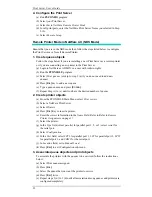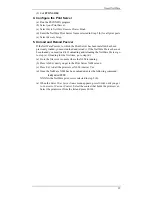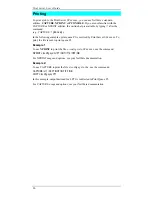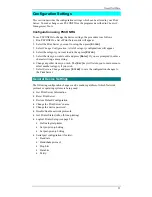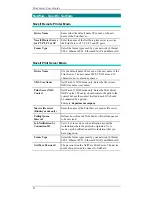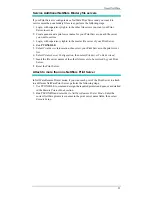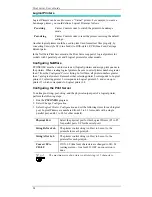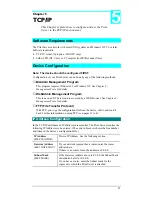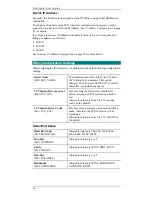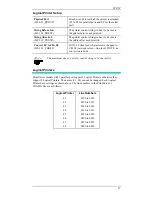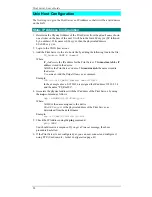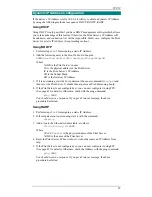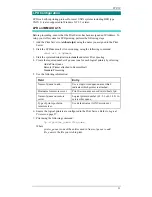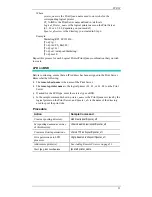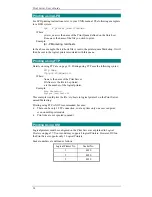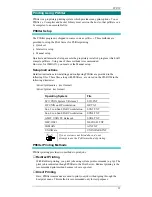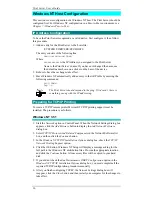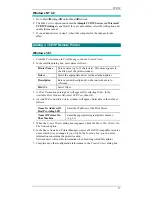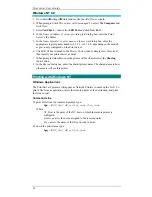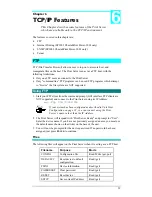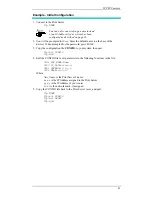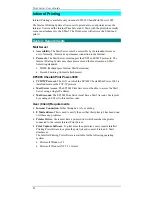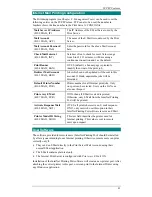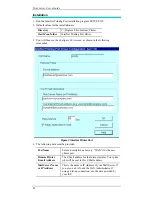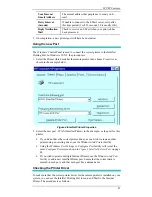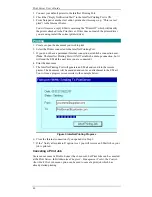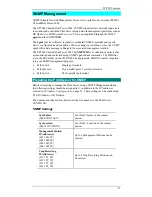
Print Server User’s Guide
32
LPD on System V
Before beginning LPD Setup, ensure that an IP Address has been assigned to the
Print Server. Keep the following points in mind:
•
The remote host name is the name of the Print Server.
•
The remote printer name is the print queue name for the Logical Printer.
Logical printers also need to be configured on the Print Server itself. (See page
27).
•
If your UNIX asks for the LPD type, be sure to identify the service type as BSD.
The Print Server’s LPD protocol meets BSD system standards.
•
In the sample commands shown,
printer_name is the name of the Print Queue
serviced by the Print Server, and
Spooler_directory is the name of the directory
used to spool the print jobs.
Procedure
Action
Sample Command
Stop Print Services
/usr/lib/lpshut
Add a System Printer
/usr/lib/lpadmin -p printer_name -v /dev/null
Restart the Print Services
/usr/lib/lpsched
Enable printing to the new
printer device
enable printer_name
Start accepting jobs for the
new printer device
accept printer_name
Create a spooling directory
mkdir /usr/spool/Spooler_directory
Make spooling daemon the
owner of this directory
chown daemon /usr/spool/Spooler_directory
Create read/write permissions
chmod 775 /usr/spool/Spooler_directory
Give permissions to LPD
processes.
chgrp daemon /usr/spool/Spooler_directory
Add remote printer(s)
(See following section).
Adding Remote Printers
A remote printer is added by inserting the following line in the /etc/printcap file.
The entry is really one line, but can be entered as shown.
Use a TAB character where shown.
printer_name|Remote_Printer_Alias:\
[T
AB
] :lp=:\
[T
AB
] :rm=
PS_NAME:\
[T
AB
] :rp=
Logical_Printer_name:\
[T
AB
] :sd=
Spooler_directory:\
[T
AB
] :mx#0:

